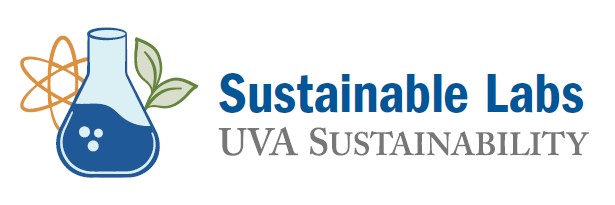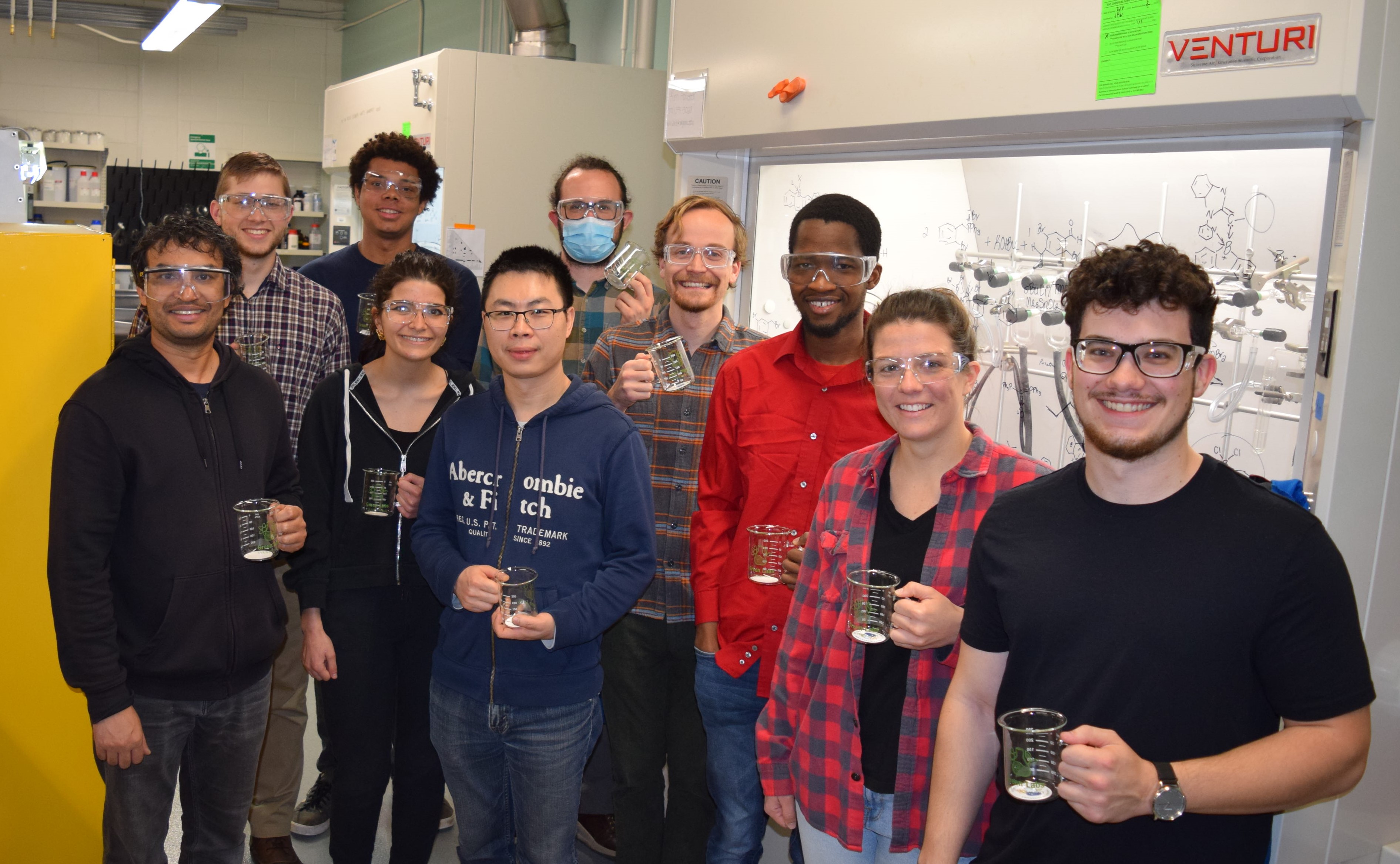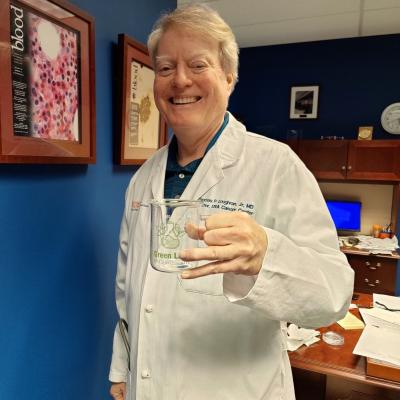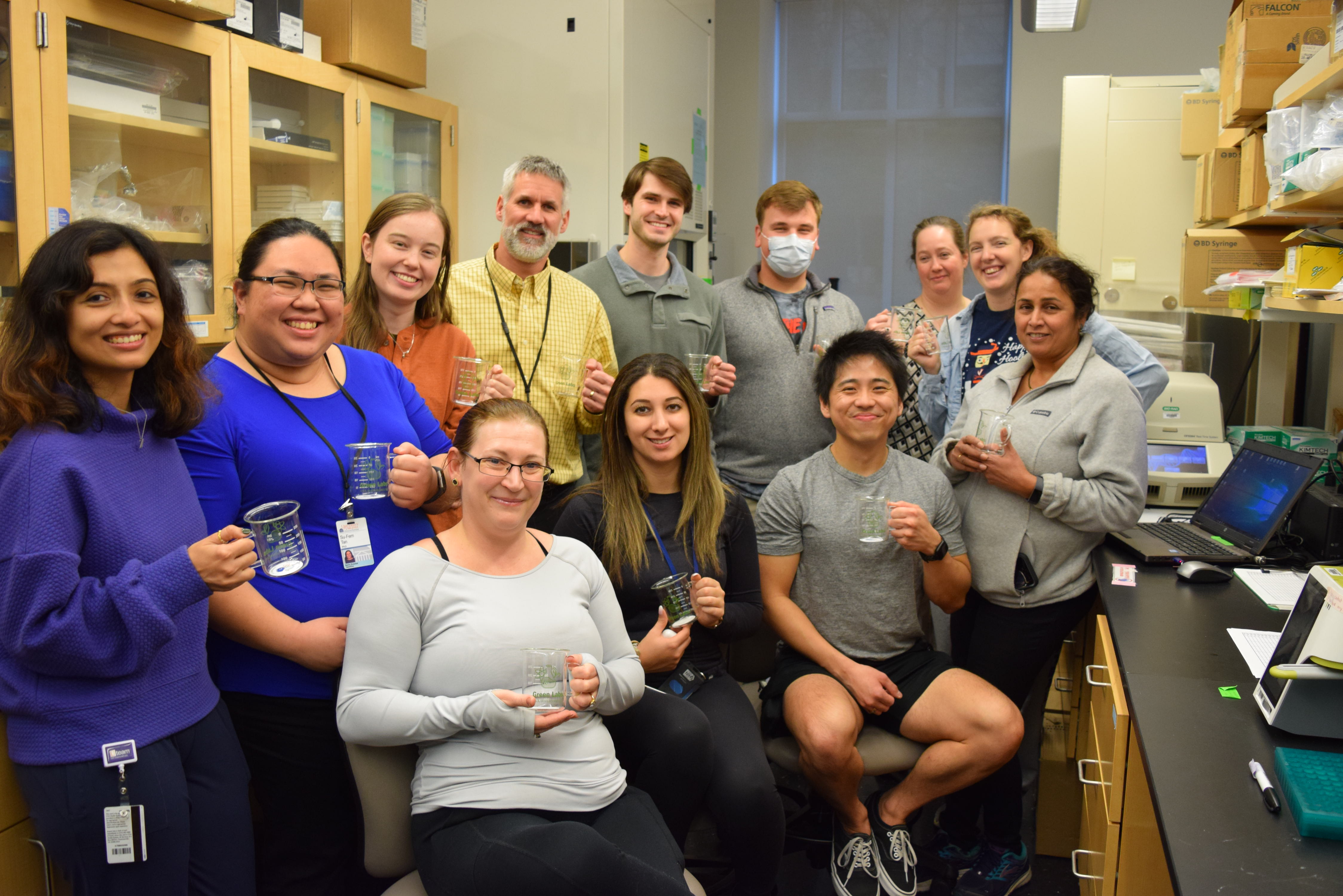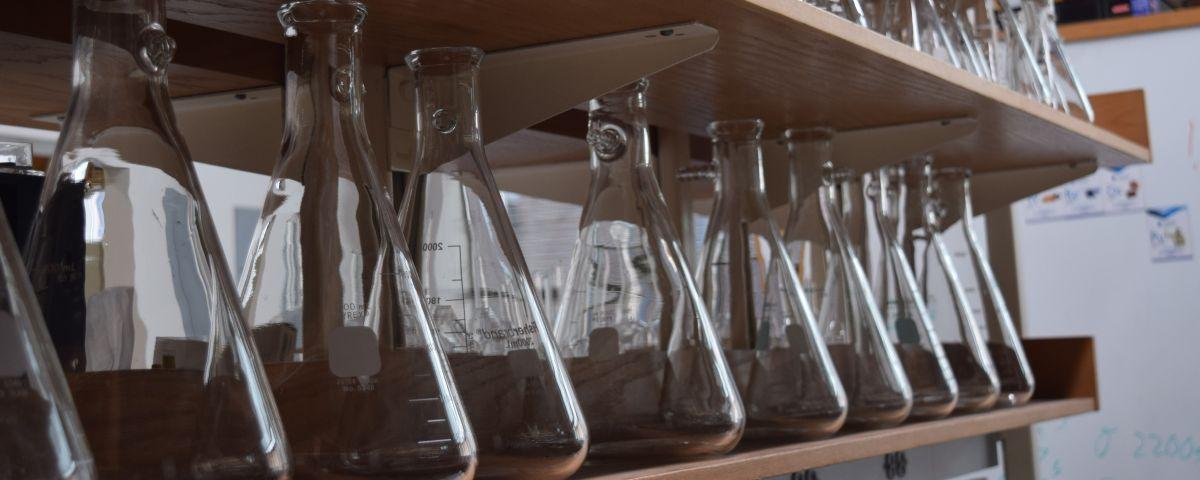
The Shut the Sash Challenge for UVA research labs is ramping up, with double the number of participants and more than 2.5 times the energy savings compared to last year.
This year, 40 labs from across Grounds participated in the UVA Shut the Sash Challenge, a friendly competition hosted by the Green Labs program to promote safe and efficient use of chemical fume hoods. That’s almost double from last year’s 21 labs that joined in the fun.
Six labs with sash position sensors feeding data to our building automation systems allowed the Office for Sustainability to calculate savings as a result of the competition, using these labs as a case study. With 47 hoods among these six labs, an estimated $7,600 in energy savings was achieved in a single month! Maintaining the same practices throughout the year could save $91,500.
Chemical fume hood sashes are critical in ensuring the safety of researchers in the lab, but they also
have a big environmental footprint. By keeping sashes (the adjustable window-like barrier between the researcher and the contained environment within the hood) closed when hoods are not actively being used, labs can significantly decrease wasted energy.
Left open, a single fume hood can use as much energy as 3.5 average homes, so shutting the sash is a simple action that can make a big difference.
Although labs account for about 9% of the University’s physical footprint, they account for roughly one third of our energy use -- a lot of that has to do with large equipment and specialized ventilation needs, and fume hoods relate to both.
We are delighted to recognize two winners from this year’s participants: the Gilliard Research Lab and the Loughran Lab.
The Gilliard Lab
The Gilliard Research Laboratory in the Department of Chemistry, led by Dr. Robert J. Gilliard Jr., works on developing novel synthetic methods that have implications for a wide range of challenges including energy storage and small molecule activation (e.g. carbon dioxide). Through interdisciplinary collaboration, the researchers are laying the foundations for more sustainable technologies, so it was a natural fit for them to participate actively in the Shut the Sash competition, promoting safe and sustainable fume hood use.
Fourth year doctoral candidate Kim Hollister found out about the competition at a Chemistry Department event. “Two Green Labs interns, Olivia and Yushun, pitched it to me and I was immediately on board. Once we got pizza involved, everyone else was on board, too.”
The incentive of winning pizza and specially designed beaker mugs helped rally the whole lab group, she said, but the metrics that she received from the Green Labs Program about their week-to-week sash position averages was the main motivator.
At the beginning of the competition, the Gilliard Research Lab were informed that their average sash position in August for their 14 fume hoods was 21% open and they set a goal to cut that to 15%. Throughout October, they were given weekly updates on their average sash position, and by the end of the month their average was a little less than 8%, thoroughly beating their goal.
What’s especially gratifying is that these practices are continuing. The Gilliard Group had an average sash position of 9.95% throughout November. “Having that monitoring just for one month has impacted us even after the competition ended,” Hollister said. “It was super helpful to set the foundation for these habits, sustainability and safety-wise.”
It’s clear that the Gilliard Group takes an intentional and practical approach to sustainability. “We don’t want to lose the big picture. Yes we’re doing some fundamental research, but in the grand scheme of things are we working towards solving these problems? Are we trying to improve the sustainability of our processes?” The Shut the Sash competition provided an opportunity for the group to have a huge impact, not just through their research but also in pitching in to help reduce UVA’s environmental footprint.
The Loughran Lab
Dr. Thomas P. Loughran Jr., Director of the NCI-designated UVA Comprehensive Cancer Center, is credited with discovering a rare blood cancer called large granular lymphocyte leukemia. He leads the Loughran Lab in the Department of Medicine, Division of Hematology and Oncology, which researches several different types of blood cancers.
“We study the causes of these cancers, in particular, genetic mutations that lead to their development and we look for therapeutic treatments, both experimental drugs and FDA-approved ones,” said Associate Professor Dr. Dave Feith.
Ung is ready to do it again in 2023. “I didn’t realize just how impactful [Shut the Sash] was until we met and until I saw those numbers about this year and last year. So I’m hoping next year we can double our impact again.” As an active trainee in the Department of Microbiology/Immunology/Cancer Biology (MIC), Ung is partnering with Drs. Amy Bouton and Mariano Garcia-Blanco, interim and future MIC chairs respectively, to engage the MIC department and increase participation in future sustainability initiatives.
The Loughran Lab’s next step in their sustainability journey will be getting certified as a Green Lab. Dr. Feith noted the virtuous cycle of how reducing the environmental footprint of the research itself can also serve the broader public good, including cancer patients. “Virtually all cancers have some potential that there are environmental exposures and mutagens that contribute to mutations that drive the disease. Any time we can reduce exposure to toxins or increase access to healthy foods for example, all of that is good to avoid cancer as a preventative measure.”
Not pictured: Enrica Marchi, Jun Yang, Mary Poss, Camden Jansen, Maggie Smith, Matt Schmachtenberg, MacKenzie Wall, & Maansi Taori.
A Growing Effort
Participation in the Shut the Sash competition doubled in 2022 as compared to 2021 and we have high hopes that we’ll have sashes even lower in the future. You can pre-register for the 2023 Shut the Sash competition by using this link.
We couldn’t have done it without all of our incredible sustainability advocates in labs across Grounds, so we’d like to recognize our other participating labs and the people who led the effort in each group:
- Meg Miller in the McGlathery Coastal Resilience Lab, Department of Environmental Science
- Weibin Shi, PhD, in the Shi Lab, Department of Radiology and Medical Imaging
- André Landin-Mal in the Lu Lab, Department of Cell Biology
- Maggie McCartney at Blandy Experimental Farm
- Gabi Martinez in the Naegle Lab, Department of Biomedical Engineering
- Remziye Erdogan & Rob Barnes in the Dolatshahi Systems Immunology Lab, Department of Biomedical Engineering
- Vini Alves da Silva, PhD, in the Moore Lab, Department of Pediatrics
- Alice Luanpaisanon in the French Lab, Department of Biomedical Engineering
- Allison McCrady in the M3 (Blemker) Lab, Department of Biomedical Engineering
- Juliana Trujillo in the Griffin Lab, Department of Biomedical Engineering
- Rebecca Deaton, PhD, in the Owens Lab, Department of Biomedical Engineering
- Tor Breza in the Price Lab, Department of Biomedical Engineering
- Anthony Bruce in the Peirce-Cottler Lab, Department of Biomedical Engineering
- Mohan Manikkam, PhD, in the Fallahi-Sichani Lab, Department of Biomedical Engineering
- Kurt Langberg in the Goldfarb Lab, Department of Pathology
- Glynis Kolling, PhD in the Papin Lab, Department of Biomedical Engineering
- Cheryl Borgman in the Janes Lab, Department of Biomedical Engineering
- Deiziane Costa in the Warren Lab, Department of Infectious Diseases
- Michelle Barbeau in the Lazzara Lab, Department of Chemical Engineering
- Emily Dennis in the McNamara Lab, Cardiovascular Research in the School of Medicine
- Noah Perry in the Civelek Lab, Department of Biomedical Engineering
- Yongde Bao, PhD, in the Genome Analysis and Technology Core Facility
- Elizabeth Nelson in the Hirschi Lab, Department of Cell Biology
- Laurey Comeau in the Elliot Lab, Department of Microbiology, Immunology, and Cancer Biology
- Ramon Ayon in the Somlyo Lab, Department of Molecular Physiology and Biological Physics
- Nick Tsihlis, PhD, in the Kibbe-Tsihlis Lab, Department of Biomedical Engineering and Surgery
- Poonam Sharma in the Christ Lab, Department of Biomedical Engineering
- Kelly Dyden in the Molecular Electron Microscopy Core Facility
- Weronika Tomaka in the Tamm Lab, Department of Molecular Physiology and Biological Physics
- Catherine Dukes, PhD, in the Dukes Lab, Department of Material Sciences and Engineering
- Kenneth Brown in the Li Lab, Department of Mechanical and Aerospace Engineering
- Megan Delamont in the Bergland Lab, Department of Biology
- Marybeth Beydler in the Sackett Lab, Department of Physics
- Paolo Siano in the Harman Lab, Department of Chemistry
- Zoe Gehman in the Gunnoe Lab, Department of Chemistry
- Amelia Reid in the Machan Research Group, Department of Chemistry
- Peter Schauss, PhD, in the Schauss Lab, Department of Physics

